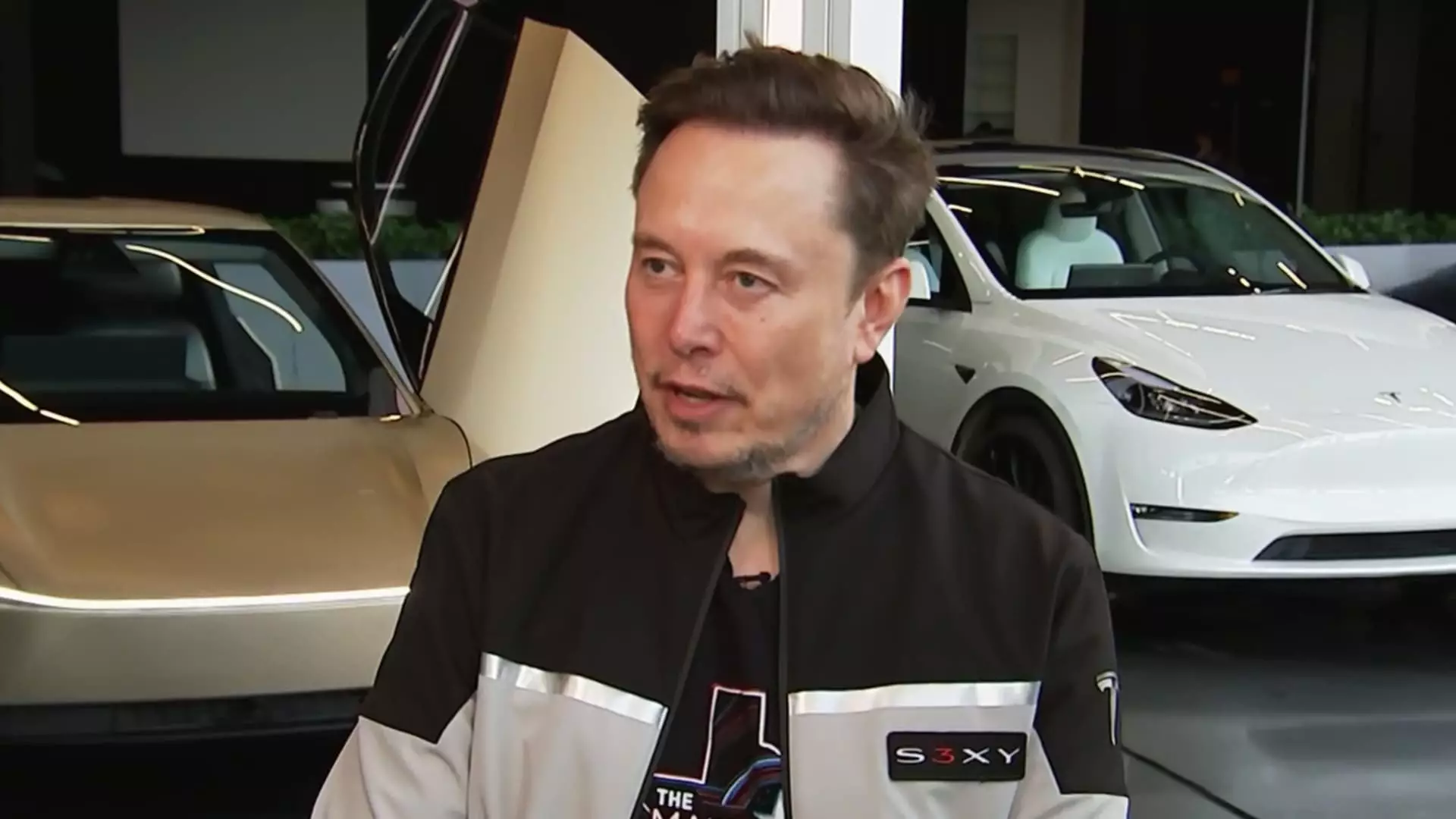In a world rapidly advancing towards automation, Elon Musk has once again caught our attention with his announcement that Tesla will introduce robotaxis in Austin, Texas, by the end of June. As if flaunting the nuances of comprehensive technological supremacy, Musk confidently suggested that this robotaxi service could revolutionize urban transportation. However, beneath this audacious proclamation lies a tale of repeated promises, ambitious timelines, and technological overreach that raises questions about the true viability of Tesla’s visions.
Musk asserts that a fleet of these autonomous vehicles—specifically Tesla Model Y—will soon navigate city streets devoid of human intervention. One cannot help but be struck by the optimism surrounding the projected expansion into other major urban centers like Los Angeles and San Francisco. Yet, much like a gambler at a casino, Musk’s relentless enthusiasm seems perilously detached from the weighty realities of the automotive industry and the treacherous pitfalls that accompany true innovation. Since 2016, Musk has waxed poetic about a self-driving car ready to be delivered “next year,” a refrain that has stirred excitement yet yielded little tangible return to date.
Scaling Up: A Nuanced Approach or a Recipe for Chaos?
To kickstart the venture, Tesla will initially deploy a modest fleet of robotaxis—only ten vehicles—in an effort to monitor their performance closely before scaling up. On the surface, this seems like a prudent strategy. After all, cautious rollout plans can prevent catastrophic failures and alleviate public concerns over safety. However, this cautious optimism belies the fact that Tesla’s ambitious approach could well become its downfall. By moving swiftly to expand the fleet following successful initial runs, Musk may disregard the complex nuances of real-world driving conditions in favor of sheer operational numbers.
This temptation to scale rapidly without fully understanding the limitations of the underlying technology is reminiscent of other challengers in the autonomous vehicle space, many of whom have already faced setbacks or outright failures. The fact that Tesla intends to rely on computer vision combined with digital neural networks, rather than integrating established technologies like lidar, raises eyebrows among experts who stress that a comprehensive approach is often necessary to ensure robustness and safety.
The Political Storm Surrounding Tesla
What’s more troubling is the political context that has shadowed Musk and his enterprises. His role as a key adviser to former President Trump’s administration has not only polarized public opinion but also seemingly affected Tesla’s sales momentum. The concern that consumers might shy away from Tesla due to Musk’s political inclinations poses a serious, albeit under-discussed, threat to Tesla’s long-term viability. A company that has historically positioned itself as an avant-garde environmental innovator now finds itself ensnared in a web of political controversy.
The implications of Musk’s political affiliations are further compounded by forecasts of a 20% drop in automotive revenue. While Musk attributes this slump to necessary factory retooling, investors and consumers alike are left pondering whether the company can regain its momentum in such an unforgiving marketplace. Moreover, there linger questions about how much sway Musk’s political standing will have on consumer purchasing behaviors going forward.
Safety First: Monitoring the Robotaxi Fleet
In unveiling Tesla’s robotaxi, Musk has emphasized that each vehicle will be monitored remotely to ensure safety. The claim that there will be no human safety driver within the car while simultaneously asserting remote oversight seems contradictory. If anything, it raises further questions about the adequacy of these safety measures. Will the remote monitoring be sufficient to address potential malfunctions or unforeseen incidents on the road? Such reliance on digital surveillance underscores a cavalier approach to an industry that historically has prioritized human oversight for good reason.
Tesla’s claims of offering a safer alternative to conventional rideshare services hinge on an assumption that artificial intelligence will flawlessly account for every road scenario. As a potential consumer, this system appears fragile at best and foolhardy at worst. A human driver responds intuitively to nuance, instinctually detecting potential hazards that a still-evolving algorithm cannot yet grasp. As Tesla attempts to position itself as the forerunner in the autonomous vehicle revolution, this imbalance could serve as the proverbial Achilles’ heel.
The Path Forward: A Leap into the Unknown
While Tesla’s entry into the robotaxi market signifies a transformative moment for the automotive landscape, it also presents a myriad of challenges that could undermine its success. The ambitious timelines, untested technology, and complex political climate indicate that Tesla’s future might be more precarious than Musk is willing to admit. The central question remains: Is this bold leap into automation a genuine stride towards innovation or a reckless pursuit of triumph that disregards significant risks? As we continue to watch this story unfold, the automotive world holds its breath, hoping that it won’t be history repeating itself but rather a beacon of progress.

